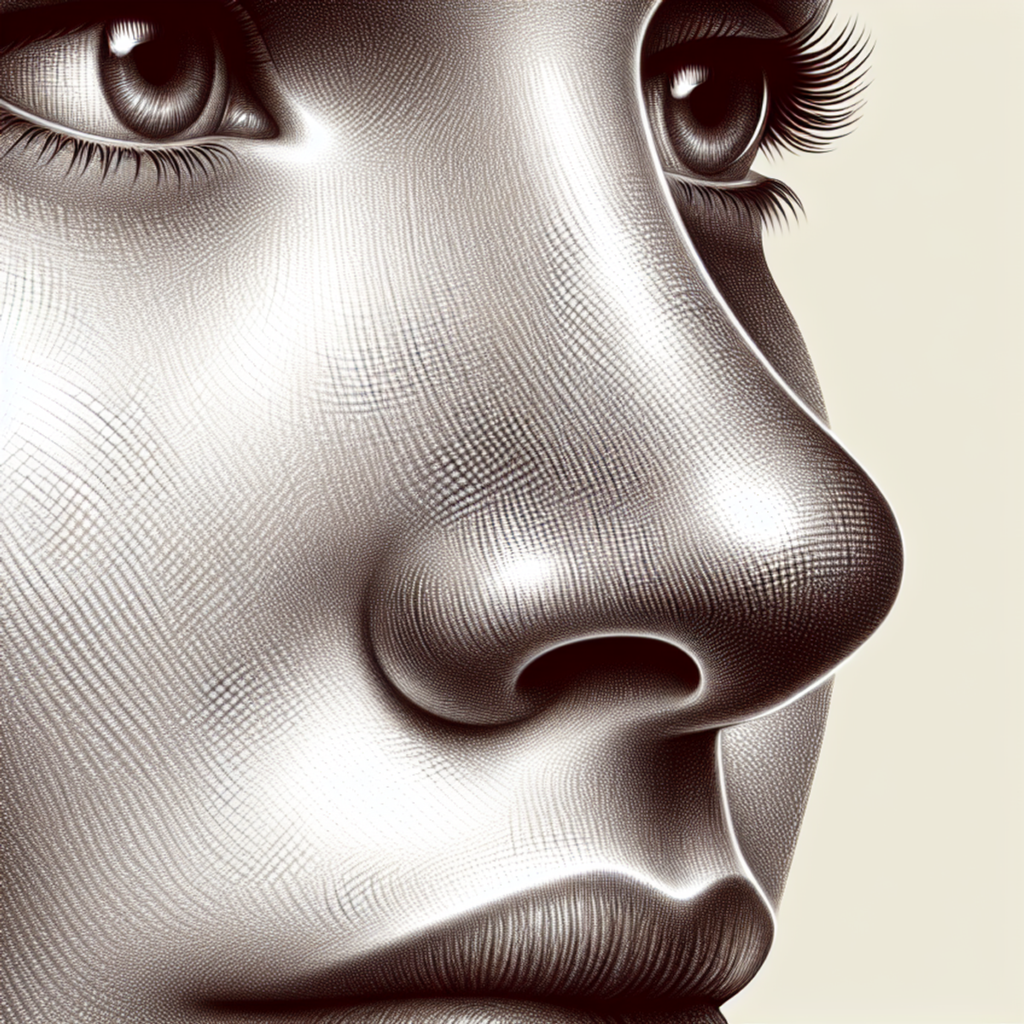Revision Rhinoplasty (Correction Nose Aesthetics)
It is an operation performed to eliminate the undesirable results of previous rhinoplasty (nose aesthetics) surgery. There is some controversy in terminology. According to some, the second operation performed by the surgeon to correct the negative results of the operation is called revision rhinoplasty, and the correction performed by other surgeons is called secondary rhinoplasty. However, the commonly used revision rhinoplasty (secondary rhinoplasty) is called revision rhinoplasty (secondary rhinoplasty).
Unfortunately, rhinoplasty surgery does not result positively in every patient. The tip of the nose can be flat-narrowed, wide, asymmetrical, low, low or extremely short and upturned (pig nose). The nostrils may be asymmetrical or wide. There may be collapse of the side walls of the nose (alar collapse) and difficulty in breathing. The arch on the ridge of the nose may continue, there may be collapse on the ridge of the nose, a beak appearance or collapse of the nasal ridge (saddle) may occur as a result of insufficient removal of the cartilage in the nose. nose) as a result of excessive removal. Inverted V appearance in the middle of the nose, nasal deformity, continuation of the curvature, irregularities on the back of the nose, excessive scar tissue development inside or outside the nose, skin and soft tissue problems may occur.
In fact, aesthetic and functional complications in primary rhinoplasty constitute the indications for revision rhinoplasty. Unfortunately, 7-15% of revision (correction) surgery is required after primary rhinoplasty. Some require minor revision, others require major overhaul. In minor revision; The result of the first surgery is acceptable and requires minor touch-ups. The patient may be satisfied with their current nose and overall appearance, but may require minor adjustments. However, if there is a significant deformity as a result of previous rhinoplasty surgery, major revision is required. Unsuccessful rhinoplasty can reduce the patient’s self-confidence and social activities, the patient is generally not satisfied with his nose, but he is also afraid of revision surgery. (I wonder if it will fail again or get worse, can I trust my doctor? etc.)
There are many reasons for failure in rhinoplasty. The most common cause is mistakes made during surgery.
Why does rhinoplasty (nose surgery) fail?
1. The surgeon’s experience may be insufficient.
2. The patient’s expectations may not be realistic.
3. The surgeon’s goal may be overly ambitious.
4. Functional problems may occur due to poor healing and scar tissue.
5. Postoperative nasal trauma may have occurred.
To prevent or minimize failure;
1. A detailed examination, a good planning should be done before the operation, and one should work meticulously and patiently during the operation. Wrong incisions, excessive or incomplete removal of cartilage and bones, and failure to repair nasal support mechanisms are common causes of poor outcomes. You should not be impatient to finish the operation. Where the surgeon is not comfortable during the operation and understands that it is not exactly as he wants, he should return to the beginning and make the necessary corrections, if necessary. The outcome of the surgery is always important, not the duration.
2. Experience; A minimum of 5-7 years of experience is required for rhinoplasty. It is frequently stated by both ENT and Plastic surgeons that rhinoplasty is one of the most difficult aesthetic surgeries. Just being a skilled surgeon is not enough. At the same time, it is necessary to be a surgeon who has a strong artistic side, is patient, works meticulously, and treats tissues with kindness and respect. It is necessary to think and repair many structures that make up the nose and their relationships with each other in 3D. In addition, it is necessary to predict which forces will affect the nose during the postoperative recovery period and how the nose will remain stable in the long term. All of these require experience. Revision rhinoplasty requires extra experience compared to normal rhinoplasty.
3. It should not be forgotten that the main task of the nose is to breathe, and it should not be focused only on the outward appearance. It is necessary to try to improve the nose as a whole without compromising neither the breathing function nor the aesthetic appearance.
For revision rhinoplasty, approximately 1 year should be waited after the previous surgery.
Preoperative Evaluation?
Preoperative evaluation is like primary rhinoplasty, but requires more detailed and careful attention. In addition, the need for grafts and possible sources should be determined and patient consent should be obtained.
Aesthetic Evaluation;
Detailed analysis of the nose is essential for a successful surgical result. Here, the skin is examined first. The thickness, quality, integrity, mobility of the skin and subcutaneous tissue and its relationship with the underlying nasal structures are evaluated. In the meantime, insufficient resection, overresection and asymmetric resection are detected. It is tried to understand the areas that have not been touched in the previous operation in the nose. Afterwards, the presence of possible graft areas is investigated.
Osteotomies and their position in the nasal dorsum are evaluated. They can be very high, normal, or very low. Is it straight, bent (curved), wide or narrow? Will revision osteotomies be necessary? Is there an open roof or rocker arm deformity? In addition, it is necessary to evaluate whether the nasal arch and nasal bone are more or less removed. In addition, the back of the nose should be examined for irregularities.
In the evaluation of the middle roof, it should be checked whether there is an inverted V deformity and mid-roof stenosis. The need for structural support (graft) is evaluated. It is checked for incomplete or excessive resection, irregularity, straight or curved cartilage profile. The anterior angle (anterior septal angle) of the nasal septal cartilage is examined and its contribution to the pollybeak deformity is evaluated.
In type evaluation; symmetry, projection, rotation, alar-column relationship, condition of the lower cartilages of the nose are evaluated. The end supports, the end parts of the septum cartilage are evaluated. All incisions inside and outside the nose are evaluated. Possible graft presence is evaluated.
Functional Evaluation;
Static and dynamic valve collapse (nasal valve narrowing-collapse) is frequently seen in revision rhinoplasty patients. Nasal lateral wall stenosis and collapse of the nasal wings while breathing are prominent features of nasal valve stenosis. Observation of the patient during normal and deep breathing can make a direct diagnosis. The modified cottle maneuver (subjectively significant improvement in the patient’s breathing when the nasal lateral wall is supported with a curette) supports the diagnosis.
Septal deviation, inferior turbinate hypertrophy (nasal turbinate enlargement), synechiae (adhesion), band scarring, septal perforation and other abnormalities can be detected with anterior rhinoscopy. However, some abnormalities (nasal vein hypertrophy, middle turbinate hypertrophy, concha bullosa, choanal stenosis, nasal polyp, chronic sinusitis, etc.) may not be seen in approximately 40% of the patients. Therefore, endoscopic examination should be performed and sinus tomography should be performed when necessary.
Photographing and Computer Analysis;
Photographing in revision rhinoplasty is the same as in primary rhinoplasty. The nose in the standard photo shoot; The photographs were taken from 6 different angles: front, bottom, right side (profile), right oblique (45°), left side (profile), left oblique (45°). Except for the standard photo shoot, I take pictures of your nose smiling and from above. While the photo taken while smiling shows the relationship between the nose and the lips, deviations from the midline of the nose are best seen in the photos taken from above. Then the photos are transferred to the computer and the most suitable nose shape for your face is designed thanks to a special program. The targeted nose at the design stage should be realistic and achievable. Otherwise, disappointment may occur. The design is very helpful in planning the surgery, but it should be known that the image created on the computer may not be exactly the same at the end of the surgery, but an extremely close image can be obtained.
It is necessary to be open to the patient and inform about the possible positive or negative consequences. There is no doubt that the goal of every revision surgery is to achieve successful and patient-satisfying results. However, if there is a strong suspicion that a better result cannot be obtained, the surgical limits should not be pushed. This should be shared with the patient. “Primum Nihil Nocere” (First do no harm!) is the basic rule of medicine.
Before the operation, you should definitely inform your doctor about the medications you use, chronic diseases (hypertension, diabetes, etc.), previous surgeries, allergies, bleeding problems. Aspirin and similar (naproxen, ibuprofen,…) blood thinners and pain relievers 10 days before the operation. Medication, vitamin A, Gingo biloba (they can increase bruising and swelling), stopping alcohol 5 days before (may increase edema), quitting smoking (delaying wound healing, increasing post-anesthetic lung problems, increasing risk) are recommended. infection).
How is Revision Rhinoplasty Surgery Performed?
In revision rhinoplasty, as in primary rhinoplasty, it can be done with an open or closed approach. Here it is necessary to know from the beginning; The open or closed approach is not a surgical technique, it is the way used to reach the cartilage and bone structures of the nose. In the open or external approach, after a small incision made in the columella (the structure that separates the nostrils) in the form of an inverted V or W, the skin is lifted and the cartilage and bone structures of the nose are reached. In the last stage of the surgery, the incision in the skin is closed by suturing. This incision scar is normally not noticed after it has healed, but can be noticed when viewed very closely and carefully. In the closed approach, all incisions are made through the nose. There is no rule that an open or closed approach is better than the other. What is decisive here is what kind of interventions should be done to the nose and with which approach these interventions can be made completely. The advantage of the closed approach; It can be counted as not disrupting the nasal tip (tip) support mechanisms, being less traumatic, shorter recovery time, faster recovery of post-operative edema, no loss of sensation at the tip of the nose. I prefer the open approach in crooked noses, noses that require major revisions, noses with significant asymmetry at the tip of the nose, and cleft lip rhinoplasty. The advantage of the open approach is that all cartilage and bone structures of the nose can be mastered and all kinds of graft and suture (suture) techniques can be applied.
Revision surgery is different from primary surgery. The tissue planes are often narrowed, the cartilage and bone tissues that are invaluable to us have been excessively or asymmetrically removed, and the forces during healing have bent the weakened or weakened cartilages. This situation requires more careful and gentle work during the surgery. Skin and soft tissue are very important in revision rhinoplasty. Often times there may be scar tissue on the skin. Revision rhinoplasty has a more intense inflammatory tissue response than primary rhinoplasty. In patients with thin skin, all protruding structures should be filed, the grafts should be thinned appropriately, and used by wrapping with fascia if necessary. In thick skin, strong cartilages are required to keep the tip of the nose stable and to carry the weight of the skin. In people with thick skin, swelling goes away late (lymphatic drainage improves late), sometimes it can take up to 2 years. The duration of the operation varies between 30 minutes and 4 hours, depending on the shape of the nose and the approach. Minor retouches are done in 30 minutes, while major revisions can take 3-4 hours on average. Revision rhinoplasty usually requires grafts. Nasal septal cartilage is often used or insufficient due to previous surgery. In this case, it may be necessary to remove cartilage from the ear or, if necessary, from the rib. In such cases, the operation time will be extended. However, it should not be forgotten that the important thing is not the duration of the operation, but the result!
The success of revision rhinoplasty; It depends on well-developed reasoning, ability, knowledge and, above all, experience. In this process, the surgeon must have a very good knowledge of anatomy and surgical approaches. In addition, the surgeon should know what to do in the face of undesirable difficulties and consequences. Patients should be followed for a long time after surgery.
My philosophy in rhinoplasty; To be the first and last surgeon to perform the nose surgery of the patient, to make the patient happy in the revision rhinoplasty and to be the last surgeon to perform the nose surgery.
The post-operative process is the same as with Primary Rhinoplasty.
Curious Topics?
When Can Revision Be Made Earliest?
It is necessary to wait 1 year for the results of the first surgery to be fully settled and for the correct determination of where to intervene in the revision.
Where Is Cartilage (Graft) Taken When Necessary in Revision Rhinoplasty?
grafts; They are the structural elements that we use from time to time to shape the nose. When necessary, I use the septum cartilage first, provided that the nasal support is not disturbed, or if the ear is not sufficient or in major revisions that require structural support, I use the rib cartilage that I have taken from the person himself. . In primary rhinoplasty, almost all of the graft need can be obtained from septum cartilage, whereas in revision rhinoplasty, ear or rib cartilage is often required depending on the size of the deformity.
The remaining cartilage can be removed, provided that a 1.5 cm L-shaped support is left in the nasal septum cartilage. Septum cartilage is my primary choice because it is in the surgical field and does not require additional incisions, can be easily shaped, provide structural support and maintain its shape. However, since septum cartilage is often used in revision rhinoplasty, the remaining cartilage is insufficient.
While removing the cartilage from the ear, an incision can be made on the front or back of the ear. Since the incisions are in line with the ear folds, they are not noticeable after healing. Since only the cartilage in the ear canal is removed, there is no change in the shape of the ear. It does not have a negative effect on hearing. If necessary, grafts can be taken from one or both ears.
Rib cartilage is taken from the cartilage part where the 7th rib meets the breastbone. With an incision of approximately 2-3 cm, the rib cartilage is reached and the required size of cartilage is taken.
Anesthesia Preference?
Revision Rhinoplasty; General anesthesia, local anesthesia or intravenous sedation can be performed without sleeping completely. Operations that will not exceed 1-1.5 hours can be performed locally or with sedation. My preference is general anesthesia for both the comfort of the patient and my ability to work comfortably. In addition, with the increase in the number of experienced anesthetists and the developments in anesthesia devices and drugs, general anesthesia has become much safer today.
Is It A Painful Process?
Mild to moderate pain may occur after Revision Rhinoplasty. These pains can be easily relieved with normal painkillers.
How Long Does Revision Rhinoplasty Surgery Take?
The duration of the operation takes between 1-4 hours, depending on the shape of the nose, the procedure to be performed and the approach. If the graft need is to be met from the ear or the ribs outside the septum, the time may be longer. Minor revisions usually take 30-60 minutes.
What is the Risk of Revision Rhinoplasty?
The risks of revision rhinoplasty are higher than primary rhinoplasty. Scar tissue formation, graft slippage, failure, long-term swelling are more common.



